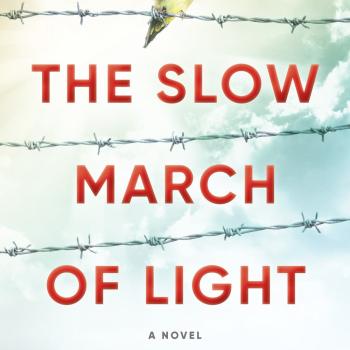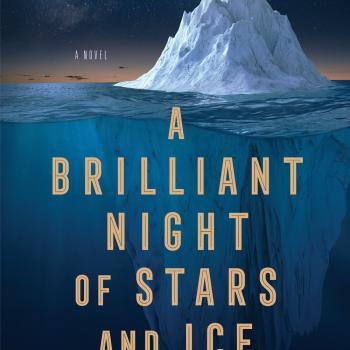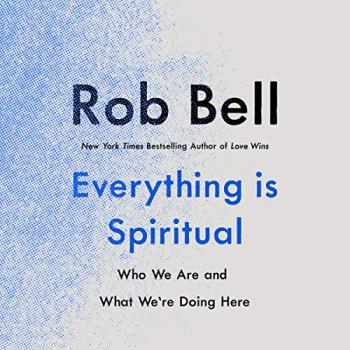Our second post in our roundtable discussion on Stephen Prothero’s book God Is Not One comes from Pagan blogger P. Sufenas Virius Lupus:
The basic premise of this book is one that got my attention, and seems extremely useful and appealing. The first chapter is quite good, and discusses this framing of the question of “world religions” in a fair amount of depth, from the historical perspective of people since the late 19th century and the first World Parliament of Religions, and the frequent statements of “perennial philosophers” since then, many of whom are involved in either interfaith dialogue or in world religions scholarship. Huston Smith, for example, is one of these, and not unlike many other such people (Joseph Campbell included), they resort to statements often from the Upanishads and the like to the effect that “The truth is one; the sages speak of it by many names.” The deficiencies of this viewpoint have been rehearsed quite a bit in my circle of associates, because it ultimately says “Your religion is valid insofar as it says exactly what mine does,” which is profoundly disrespectful. It assumes that the “goal” of all religion is to “climb the mountain,” and that the various religions are different paths up that mountain; and it often goes to the idea that one should have one’s eyes on the goal rather than the path (which will get you eaten by a grue, I think!).
For those of you who are scoffing at this type of perennialist thinking, and who are hard polytheists and the like, I’d invite you to take a step further and start looking at your own vocabulary: how often do you speak in terms of “the divine” or “deity”? While that’s not as egregious as saying “We’re all one,” nonetheless, it buys into what is ultimately a monistic understanding of divinities and divine realms and realities. To be valid, individual religions need not be aiming toward the same thing or talking about the same thing…and that’s really the point of the first chapter of the book, and indeed much of the rest of it. From the viewpoint of phenomenology of religion, that is utterly unnecessary; and yet, it is assumed that at least the mystics from all religious traditions worthy of the name “mystic” do fundamentally understand each other because of this underlying unity of divinity. While I think that is an observation that is true fairly consistently across religions–i.e. mystics often don’t have difficulty understanding one another–that brings up a variety of other questions before it even suggests to me that the underlying divinities involved, or the goals of individual traditions’ practices, are “one,” or are even necessarily similar.
Prothero then goes on to suggest that each of the various religions he covers has an underlying problem and a suggested solution to it. The way he lays this out is quite clearly based on the Four Noble Truths of Buddhism, in my opinion, which is a structural bias that I don’t think he properly acknowledges; and while his answers for the various religions do make a large degree of sense, I wonder if that particular viewpoint doesn’t have a great deal to do with it. (If one uses a theological framework from a non-theistic religion to argue for the underlying realities of many different religions in a religious studies framework…is that not a theological choice in itself? Hmm…) He then has eight substantive chapters, which go in the following order: Islam, Christianity, Confucianism, Hinduism, Buddhism, Yoruba Religions, Judaism, Daoism, with a final chapter on Modern Atheism, and then a short conclusion.
Why did he choose those religions and that order? He is attempting to talk about the eight most powerful religions. Why eight? I wonder if the Noble Eightfold Path suggested the number, given the implied Buddhist framework otherwise (he does not admit to come from any sectarian viewpoint, other than having been raised in Christianity, but he gave it up earlier in life). He admits in the introduction that he is sorry not to have included a chapter on Sikhism. He mentions Shinto in the intro as well, but does not have a chapter on it. I don’t recall him having mentioned neo- or any other type of paganism either; he does mention Wicca in the short litany of religions he has not included–which, in addition to the above-mentioned religions, also names the Bah’ai faith, Zoroastrianism, Jainism, Scientology, and Rastafarai. He puts Islam first because it has had the most profound effect on public life since September 11, 2001; he then follows with Christianity because, with about 2.4 billion followers worldwide, it is the largest world religion. He puts Confucianism third because as an individual whose teachings have been profoundly influential on the largest group of world population (China and much of East and Southeast Asia) for two thousand years, it’s very important–despite whatever debates still exist in some peoples’ minds as to whether or not it is a religion or not. And so on down the line. He includes Judaism, despite its very small numbers (14 million worldwide) due to its having given “birth” to the two top world religions.
I am happy about his inclusion of the Yoruba religions as a related and important, large, influential group, and he does make a very good explanation of how inadequate it is to include all “primal,” “primitive” or “aboriginal” religions in a group with shamanism and such in an introductory chapter in a world religions textbook, which would often include African and Afro-Diasporic religions amongst its grouping.
While I’m not a complete expert in every religion outlined, I was able to follow most of it and be familiar with many of his references. I was annoyed that there are two bits of it that he is completely wrong about, and both of them are in the Christianity chapter (though one of them is repeated in the Judaism chapter): first, that St. Augustine wrote the world’s first autobiography; and second, that there is mention of male homosexuality in the Bible, but not lesbianism. The first is incorrect because–though it has not survived–the Emperor Hadrian wrote an autobiography in the second century C.E., which is over two centuries before Augustine, and I’m fairly certain he was not the only individual in the Western world to have done so before the late fourth/early fifth century. Second, it is problematic to talk about anything in the Hebrew or Christian Bibles as “homosexuality”; but, independent of that, the Hebrew Bible has the various mentions in Leviticus and Deuteronomy that are taken as condemnations of homoerotic acts amongst males, but the only definite mention of this in the Christian Bible occurs in Romans 1, where both male and female acts are mentioned. (So, whatever one may think about the story of David and Jonathan, or of Ruth and Naomi, at very least, Paul mentions lesbianism as a bad thing!) While I can understand the wish to not draw attention to these passages for those who may be reading this book for other reasons (i.e. “Let’s not give homophobes something to build alliances with other religions upon!”), it’s inaccurate and should not have been allowed to get through the editors.
The final chapter on atheism is a very good summary of the “New Atheists” who are just as dogmatic and have as much proselytizing fervor as any Christian missionary. It makes a distinction, though, between these new atheists (a.k.a. “angry atheists”) and “friendly atheists,” which is a fair enough point.
Does his book succeed? Yes and no. It does demonstrate that each of the different religions has a different basic viewpoint on the world, and therefore a different idea on how to go about interacting with the world with that underlying concern in mind. To put it in slightly different terms (from Richard Grigg’s Theology as a Way of Thinking), each “what” has a “how” to go with it that is appropriate to it. But, along the way, a full historical view is not always given, and Prothero is often more concerned to give his spin on some clever phrase or metaphor than he is on giving useful information. For this same reason, it’s an entertaining and quick read, but it does suffer a bit in terms of thoroughness as a result. It may not be a good primer on world religions as much as a good way to outline an approach for looking at each religion in a way that respects its particularities.
Will it be useful for pagans and polytheists? Substantially, no. Methodologically, possibly. Not a bad book, by any means, but certainly not quite what one would hope with a title like that. I’d say the introductory and concluding chapters, though, are useful and would have wider applicability than to just what Prothero writes about here, including for modern pagans.
My Question for Stephen Prothero: If you were to write God Is Still Not One, and included eight more religions that were not covered in the first book, what would they be, what order would you put them in, and how would you characterize them (e.g. Buddhism as “the Way of Awakening,” etc.)?
Read Stephen’s answer to this — and other bloggers’ questions — here.
Return to the Patheos Book Club for more resources for deeper reading.












